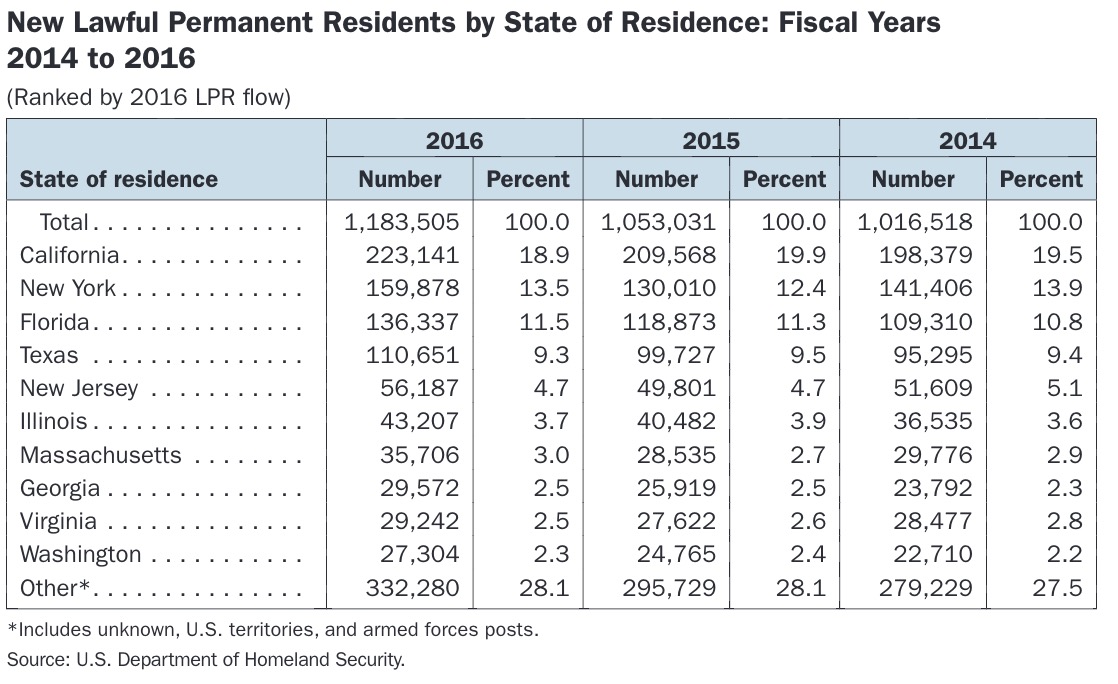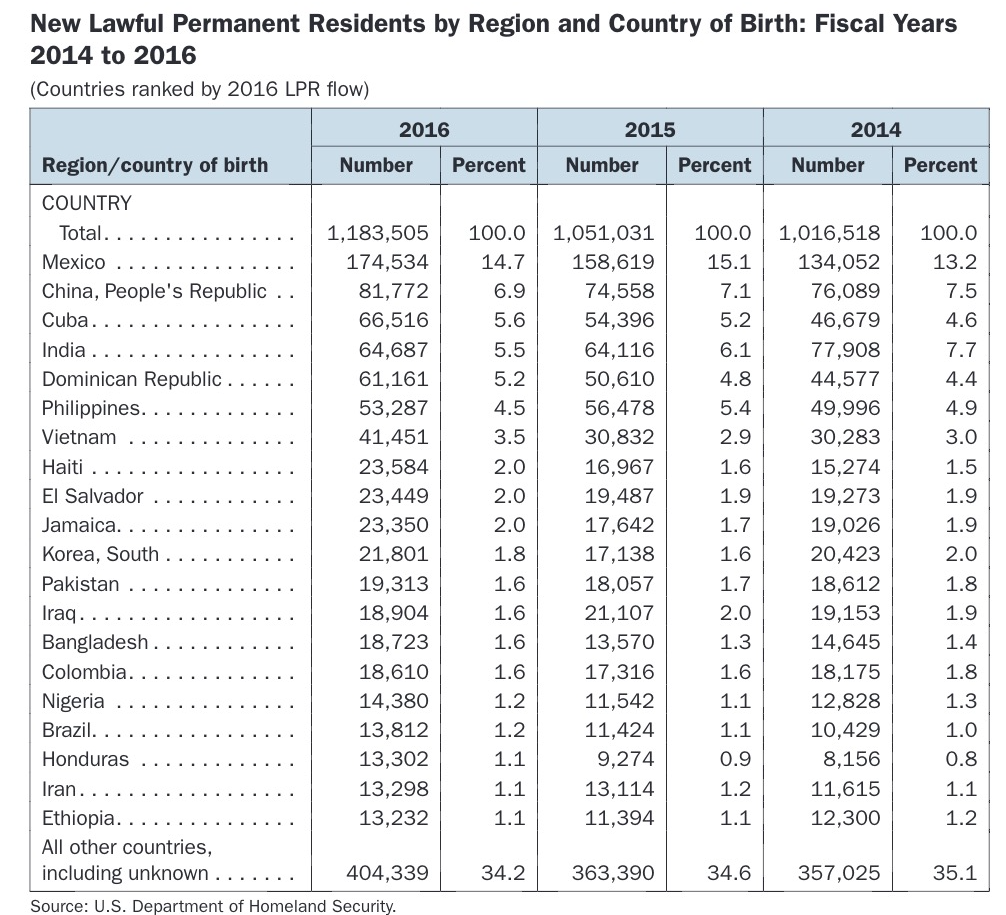“Green card” or Lawful permanent residents (LPR) holders are granted permanent residency in the United States and may lawfully live and work permanently anywhere in the United States, own property, and attend schools, colleges, and universities or join armed forces.
A total of 1,183,505 persons became LPRs in 2016. Employment-based preference LPRs constituted 12 percent of all new LPRs in 2016, according to 2016 Department of Homeland Security Statistics
California is the most popular state to become a lawful permanent resident for three consecutive years. California was the state of residence of nearly one-fifth (19 percent) of persons granted LPR status in 2016. Other leading states of residence included
- California (19 percent)
- New York (14 percent),
- Florida (12 percent),
- Texas (9.3 percent), and
- New Jersey (4.7 percent).

In 2016, 15 percent of all persons granted LPR status were born in Mexico, which has been the leading source of new LPRs each year since 1978. Other prominent countries of birth were
- Mexico (15 percent)
- China (6.9 percent),
- Cuba (5.6 percent),
- India (5.5 percent), and the Dominican Republic (5.2 percent).
These five countries accounted for 38 percent of all new LPRs in 2016

Most LPRs who are at least 18 years of age are eligible to apply for US citizenship after meeting certain requirements. These requirements generally include five years of LPR status in the United States (or three years for those married to a United States citizen) and successful completion of English language and civics tests (unless an exemption or waiver applies for one or both tests). Children in LPR status and under the age of 18 may automatically acquire citizenship through a U.S. citizen parent if that parent naturalizes.





